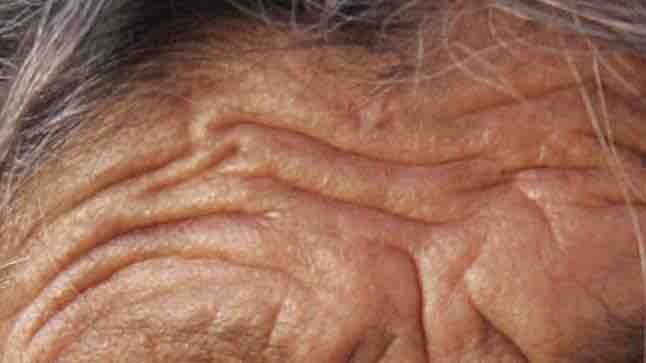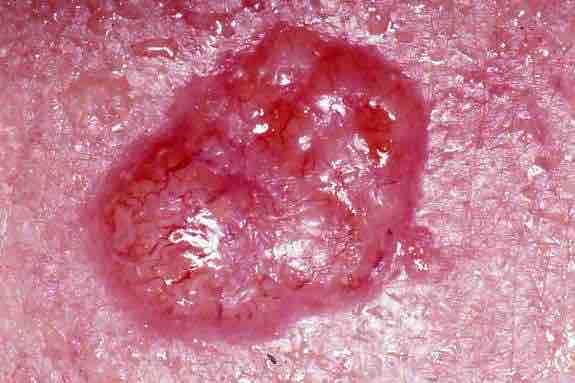Intrinsic aging and extrinsic aging are terms used to describe cutaneous aging of the skin and other parts of the integumentary system. While having some effects on the epidermis, such aging seems to primarily involve the dermis .

Wrinkled Skin
Wrinkles form due to intrinsic (loss of collagen) and extrinsic (photodamage) aging.
The effects of intrinsic aging are caused primarily by internal factors alone. It is sometimes referred to as chronological aging and is an inherent degenerative process due to declining physiologic functions and capacities. Such an aging process may include qualitative and quantitative changes such as diminished or defective synthesis of collagen and elastin in the dermis. As skin ages, it becomes thinner and more easily damaged. Intensifying this effect is the decreasing ability of skin to heal itself as a person ages. Among other things, skin aging is noted by a decrease in volume and elasticity and the increased incidence of skin folds or wrinkles. Aging skin receives less blood flow and lower glandular activity. Cortisol (associated with stress) causes degradation of collagen, accelerating skin aging.
Extrinsic aging of skin is a distinctive process caused by external factors which include ultraviolet radiation, cigarette smoking, and air pollution, among others. Of all extrinsic causes, radiation from sunlight has the most widespread documentation of its negative effects on the skin. Because of this, extrinsic aging is often referred to as photoaging. Photoaging may be defined as skin changes caused by chronic exposure to UV light. Photodamage implies changes beyond those associated with aging alone. It is defined as cutaneous damage caused by chronic exposure to solar radiation and is associated with emergence of neoplastic (cancer) lesions. Photoaging has two main concerns: an increased risk for skin cancer , and the appearance of damaged skin. In younger skin, sun damage will heal faster since the cells in the epidermis have a faster turnover rate, while in the older population the skin becomes thinner and the epidermis turnover rate for cell repair is lower which may result in the dermis layer being damaged.

Skin Cancer
Image of a basal cell carcinoma caused by extrinsic aging.
A validated comprehensive grading scale has categorized the clinical findings of skin aging as laxity (sagging), rhytids (wrinkles), and the various facets of photoaging, including erythema/telangiectasia (redness), dyspigmentation (brown discoloration), solar elastosis (yellowing), keratoses (abnormal growths), and poor texture.